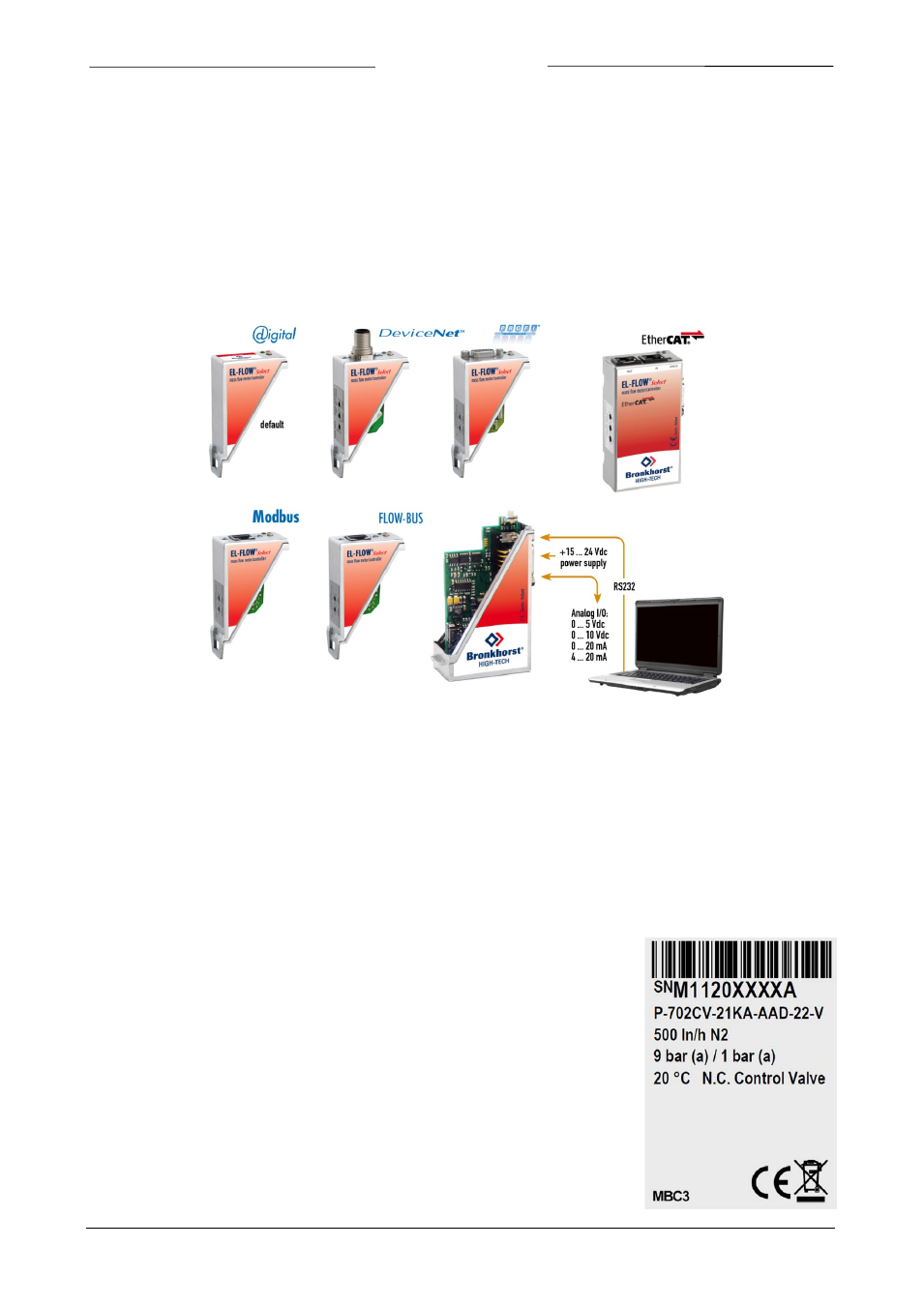1 general product information – Bronkhorst Multibus User Manual
Page 5

BRONKHORST
®
Page 5
Operational instructions for digital multibus instruments
9.17.023
1 GENERAL PRODUCT INFORMATION
1.1 I
NTRODUCTION
This user guide explains the functioning of Bronkhorst
1)
digital Multibus instruments features and parameter
structure. They are called MULTIBUS instruments because the digital instruments may be fitted with a field bus. At
this moment the following types of field buses are supported: FLOW-BUS, Modbus, DeviceNet, PROFIBUS and
EtherCAT. Therefore included herein is the basic information to operate a digital instrument with optional field bus.
Explained is the functioning of the several parts of a digital system as the measuring system, control settings, alarm
and counter use and identification parameters. For every field bus a separate user guide is available.
1)
Bronkhorst:
This includes Bronkhorst High-Tech B.V. , Bronkhorst Cori-Tech B.V. and
M+W Instruments GmbH.
1.2 M
ULTIBUS TYPES
In 2000 Bronkhorst developed their first digital instruments according to the “multibus” principle. The basic pc-board
on the instrument contained all of the general functions needed for measurement and control, including alarm,
totalizing and diagnostic functions. It had analog I/O-signals and also an RS232 connection as a standard feature. In
addition to this there is the possibility of integrating an interface board with DeviceNet™, Profibus-DP
®
, Modbus ,
FLOW-BUS or EtherCAT protocol. The first generation (MBC-I) was based on a 16 bit Fujitsu controller. It was
superseded in 2003 by the Multibus type 2 (MBC-II). This version was also based on
the 16 bit Fujitsu controller but it had several improvements to the MBC-I. One of
them is the current steering of the valve. It reduced heat production and improved
control characteristics. The latest version Multibus controller type 3 (MBC3) is
introduced in 2011. It is build around a 72MHz 32 bit NXP ARM controller. It has AD
and DA controllers on board which makes it possible to measure noise free and
control valves without delays. The internal control loop runs 6 times faster compared
to the MBC-II therefore control stability has improved significantly. It also has several
improved functions like reverse voltage protection, inrush current limitation and
overvoltage protection.
MBC3 instruments can be recognised by the “MBC3” placed on lower left side
of the instrument label (see example).
